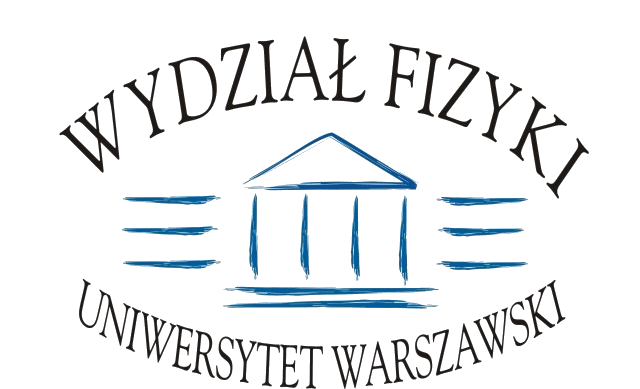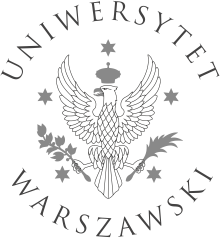Seminarium Kosmologia i Fizyka Cząstek
2006/2007 | 2007/2008 | 2008/2009 | 2009/2010 | 2010/2011 | 2011/2012 | 2012/2013 | 2013/2014 | 2014/2015 | 2015/2016 | 2016/2017
2016-06-14 (Wtorek)
Tomo Takahashi (Saga University, Japan)
Probing multi-field models of inflation on small scales
We discuss multi-field models of inflation, particularly focusing on mixed inflaton and spectator field models where the inflaton and the spectator fields can be both responsible for primordial density fluctuations. First we discuss the formalism to investigate such models and current constraints from CMB, then we investigate the CMB spectral μ distortion in the model. We argue that future observations of μ distortion could provide a critical test of models of this kind. We also discuss the implications of such small scale observations on the running of the primordial spectrum. Some other probes such as 21 cm line fluctuations are also discussed.
2016-06-07 (Wtorek)
Andrey Doroshkevich (Lebedev Physical Institute RAS, Moscow)
Observational tests of the composition of dark matter
2016-05-31 (Wtorek)
Tobias Huber (Universität Siegen)
Non-leptonic B-decays at two loops in QCD
I report on the calculation of NNLO corrections to non-leptonic two-body B-decays in the framework of QCD factorization. After an introduction I will present some aspects of the calculation, and afterwards show the results of our phenomenological analysis, which takes all currently-known perturbative corrections as well as the most recent values for non-perturbative input parameters into account.
2016-05-24 (Wtorek)
Tomislav Prokopec (Utrecht University)
Quantum Scalar Corrections to the Gravitational Potentials on de Sitter Background
This talk is based on arXiv:1510.03352 with S. Park and R. P. Woodard. We employ the graviton self-energy induced by a massless, minimally coupled (MMC) scalar on de Sitter background to compute the quantum corrections to the gravitational potentials of a static point particle with a mass M. The Schwinger-Keldysh formalism is used to derive real and causal effective field equations. When evaluated at the one-loop order, the gravitational potentials exhibit a secular decrease in the observed gravitational coupling G. This can also be interpreted as a (time dependent) anti-screening of the mass M.
2016-05-17 (Wtorek)
Aqeel Ahmed (IFT UW)
750 GeV resonance: a messenger from warped extra dimensions?
Recently the ATLAS and CMS experiments at the Large Hadron Collider has observed an excess in the di-photon channel at the invariant mass of 750 GeV. The observed (local) significance of the di-photon excess at 750 GeV is 3.9 (3.4) sigma at the ATLAS (CMS) experiment and the signal is consistent with spin-0 and spin-2 particles. I will present the case studies where the 750 GeV resonance could be either a graviton (spin-2) or a radion (spin-0) from a compact warped extra dimension.
2016-05-10 (Wtorek)
Michał Spaliński (NCBJ)
Hydrodynamics for QGP
Relativistic hydrodynamics is the standard phenomenological description of quark-gluon plasma evolution following a nuclear collision. Efforts aimed at understanding how the hydrodynamic framework can be related to an underlying microscopic theory have lead to an appreciation of the role and meaning of the hydrodynamic gradient expansion. I will describe some recent developments in this area.
2016-04-26 (Wtorek)
Michał Artymowski (Jagiellonian University)
Inflation from the most general f(R) theory
The Starobinsky model of the f(R) gravity suffers from many problems in the presence of higher order corrections. In my talk I will extend it into models with finite and infinite amount of terms and I will show how to obtain inflationary scenarios with those. I will also discuss vacuum stability and compare results with the Planck data.
2016-04-19 (Wtorek)
Mateusz Duch (IFT UW)
Enhancement of dark matter annihilation and self-interaction rates in the vicinity of a resonance
The evolution of dark matter is significantly altered, when it annihilates in the vicinity of Breit-Wigner resonance. First I will discuss the dependence of thermally averaged cross-sections on the shape of the resonance and present the approximate formulas for the relic abundance. In the next part I will focus on an idea of the self-interacting dark matter. The enhancement of the self-interaction rates from the Higgs resonance will be illustrated within the Abelian vector dark matter model. Finally, I will comment on bounds coming from the indirect searches with the Fermi-LAT targeting dwarf spheroidal galaxies.
2016-04-12 (Wtorek)
Marek Lewicki (IFT UW)
Enabling Electroweak Baryogenesis through Dark Matter
I will discuss the impact on electroweak baryogenesis from a swifter cosmological expansion induced by modified cosmological history of the universe. I will also detail the experimental bounds that one can place on such models. The modifications can be sizeable if the expansion rate of the Universe increases by several orders of magnitude. I will focus on the Standard Model supplemented by a dimension six operator directly modifying the Higgs boson potential and show that due to the modified cosmological history, electroweak baryogenesis can be realized, while keeping deviations of the triple Higgs coupling below HL-LHC sensitivies.
2016-04-05 (Wtorek)
Eung Jin Chun (Korea Institute for Advanced Study, Seoul)
Electro-Weak Dark Matter: non-perturbative effect confronting indirect detection
We update indirect constraints on Electro-Weak Dark Matter (EWDM) considering the Sommerfeld-Ramsauer-Townsend (SRT) effect for its annihilations into a pair of standard model gauge bosons assuming that EWDM accounts for the observed dark matter (DM) relic density for a given DM mass and mass gaps among the multiplet components. For the radiative or smaller mass splitting, the hypercharged triplet and higher multiplet EWDMs are ruled out up to the DM mass 10-20 TeV by the combination of the most recent data from AMS-02 (antiproton), Fermi-LAT (gamma-ray), and HESS (gamma-line). The Majorana triplet (wino-like) EWDM can evade all the indirect constraints only around Ramsauer-Townsend dips which can occur for a tiny mass splitting of order 10 MeV or less. In the case of the doublet (Higgsino-like) EWDM, a wide range of its mass >500 GeV is allowed except Sommerfeld peak regions . Such a stringent limit on the triplet DM can be evaded by employing a larger mass gap of the order of 10 GeV which allows its mass larger than about 1 TeV. However, the future CTA experiment will be able to cover most of the unconstrained parameter space.
Stron 1 z 3






